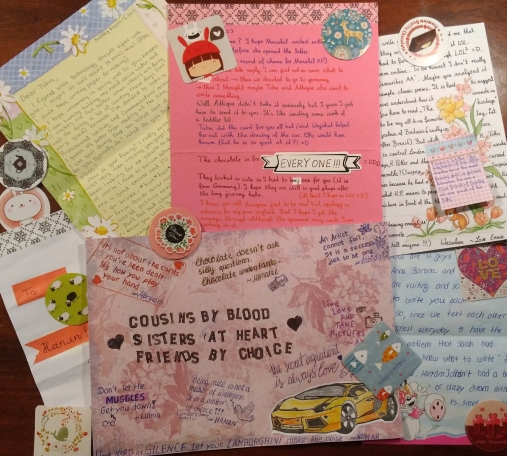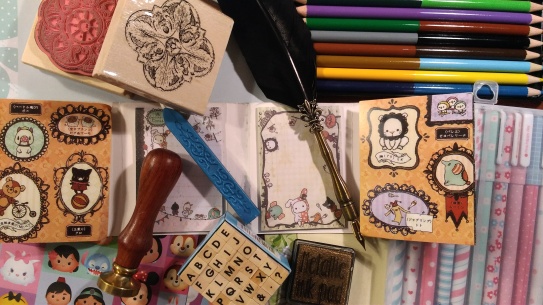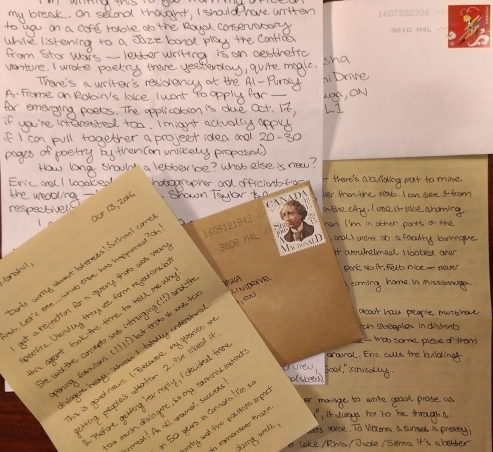Writing a letter to a friend or loved one shouldn’t be hard. It should be the simplest thing you ever do. Write, address, stamp, and send. Simple. But, in the world of internet DIY’s, its become a bit much.
We already know why nobody sends letters via snail mail anymore: Sending a letter is getting more and more expensive, and there are more effective ways of keeping in touch.
But we still know that sending letters or cards is personal; it shows you care precisely because you don’t need to do it, and maybe that’s why there is an increasing number of people who are using snail mail again.
Except, it seems like snail mail has been taken over by the DIY community all over the internet. And for the uninitiated in letter writing, searching creative websites like Pinterest for “mail ideas” will only leave you overwhelmed.
And this is because sending mail has evolved into what I call “DIY mail”.
While “DIY mail” isn’t a real term, I think everyone can guess what I am talking about:
These are the overdone letters, full of stickers and stamps and fancy writing in different colours, and washi-taped unrecognizable. They’re on cute pieces of stationery, with letterheads and borders. The address on the envelope is written in careful calligraphy or the envelope is illustrated with drawings. Even wax seal stamps have made a comeback in the DIY community.

And it all looks so beautiful!
The DIY mail black hole on Pinterest makes you feel like you need to do all of these things to write a nice letter.
But the truth is, you don’t. At all.
Yeah, sure they make things look cuter, but they only get in the way of you actually sending a thoughtful letter.
What to ignore:
- Matching pretty paper and envelopes
- Washi tape
- Different coloured pens
- Rubber stamps and ink
- Stickers
- A seal and wax

Down with the letter writing kits! Oh alright, temporarily. That kit is really nice tbh.
Getting caught up in all of this stuff will just make you less likely to spend time actually writing, and so I say, ditch this DIY mail nonsense. Believe me, your recipient won’t mind.
All you need is a piece of paper, and something to write with.
I don’t really think I have to explain the rest, start off with “Dear”, fill in the middle with whatever message you want, and end with your signature. Here’s a video on how to write a letter. It has a hilarious backing soundtrack.
Okay, now that you’ve gotten rid of all of those decorative distractions, you’re probably wondering
“what in the world am I supposed to write about?”
And the short answer is: whatever suits you.
But I understand why you’re confused.
Letter-writing isn’t exactly common. Our friends and relatives are probably as informed as they can be about our lives. They’ve already read our breakfast grievances this morning on twitter, and they’ve read that we got that new job, or didn’t, on Facebook. It’s pretty much an obsolete form of communication in the contemporary world, and that’s why a letter’s value is now more in its aesthetics than its contents.
But I disagree. And here’s why:
There are things you can say in letters, that you cannot through social media or text.
When I send letters to my friends, I share things that wouldn’t usually come up over brunch.
I write about my hopes and dreams for the future, or my 3 am existential crises and what big questions I’m pondering at the time. I write about issues or morality or ethics and what I think of them. The letter is a sort of journal or essay, except for only one other person to look at. It is a place to keep up with the deeper changes in our lives.
And having these discussions in letters isn’t unprecedented. I know we tend to think of letters of the past as dramatic missives sent by horse to inform the Bennetts that Lydia has run away with Mr. Wickham —in which case, texting is so much more convenient —but that is not all they were used for.
Before emails, letters were used by intellectuals to share their thoughts and advice for years, writing nuanced theories and unconventional ideas meant only for the eyes of their recipient. These letters informed thought. Letters between authors and thinkers were so insightful that they’ve been anthologised as a demonstration of the writer’s opinions and processes.

This doesn’t mean you can’t write about the simpler things in life. Not every letter has to be the deep musings of an author’s experiences.
I find it useful to write about events that have happened over long periods of time. For example, I might talk about a course I’ve taken in school, and what I thought about it, or an interesting story from a recent vacation.
And of course, you can still share little things such as a recent album you really liked, or a banal rant on the merits of fuchsia over hot pink. But I think the length and physicality of a letter pushes you to think before writing, and so is an exercise in a more analytical type of conversation. This to me, is the strength of a letter.
Whether you send mail for its aesthetic production, or don’t send letters at all, this is just a place to start. These suggestions are a way to start thinking about what to actually write in a letter, instead of what to put on the page.
So get out your lined paper and dig out the pen from under the mess on your desk, and write a letter. Worry about the frills later.
Happy Writing!